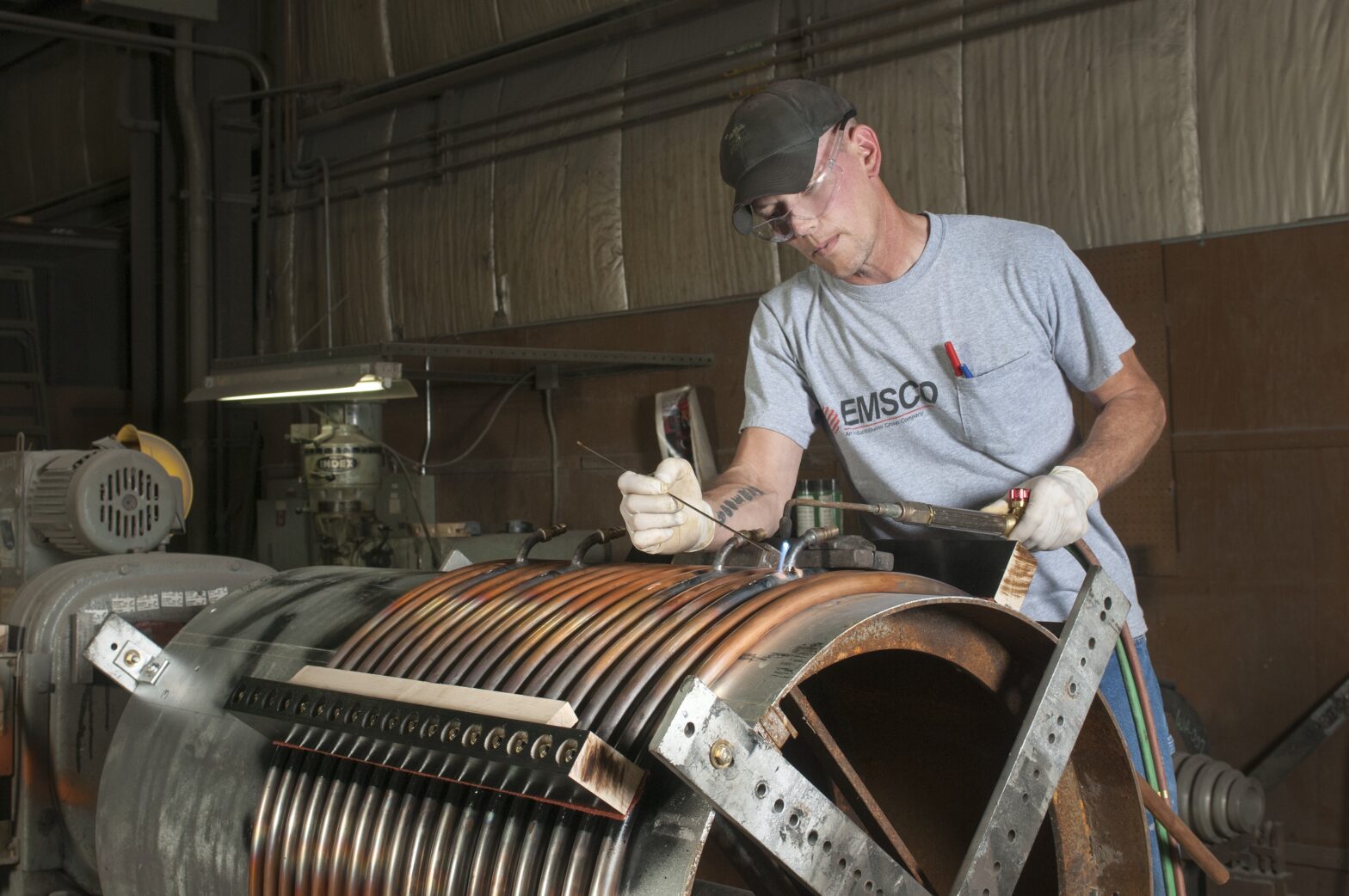Understanding Heat Rejection Services for Induction Melting Furnaces
February 23rd, 2023

As a business owner, you know the importance of keeping your equipment maintained. Broken or worn-down equipment leads to a decrease in productivity and payoff. By partnering with ESMCO, you will safeguard your company’s ability to meet production deadlines.
At ESMCO, we pride ourselves on our proficiency in engineering, manufacturing, sales, and installation of induction melting furnaces. Keep your equipment performing by enlisting our expertise in furnace repair, induction coil repair, and heat rejection processes!
Focus
Heat rejection services center upon optimizing the heat rejection process. Excess heat from cooling systems forms when the cooling tower reaches the heat limit. Heat rejection is the total amount of heat energy transferred from the cool side to the warm side and the work generated by the compressor.
To optimize heat rejection process, consider beginning with methods that can be accomplished with existing hardware and components. Optimizing heat rejection process results in a lower percentage of energy use and curbing energy costs. Furthermore, utilizing heat rejection services reduces emissions like carbon dioxide (CO2) and nitrogen oxide (NOx). [3]
Testing
There are many methods for testing heat rejection. Heat exchangers are often utilized to optimize heat rejection process. Other gadgets such as gauges can aid in finding the correct calculations. By calculating heat rejection, you can find the quantities required to select radiators and oil coolers.
The equation for calculating the heat rejection process. [2]
Q=c∗p∗F∗Δ T
Q is the heat rejection (kW)
c is the specific heat capacity (kJ/kg*c)
p is the density (kg/m^3)
F is the flow rate (m^3/hr)
Δ T is the change in temperature (K or C)
Process
Several methods have been developed to optimize heat rejection process. Often, these methods vary depending on the application and hardware available. It may be necessary to try several different methods before finding the one that works best for your application. To reduce heat in system operations, target the temperature level with the least possible maintenance and auxiliary energy necessary. [1] The following chart reveals methods and example activities for optimizing heat rejection.
Process Heating: Best Bets for System Savings and Improvements| Process Heating Component | Energy Saving Method | Energy Savings Potential (% of current use) | Typical Implementation Period | Typical Payback | Example Activities |
| 1. Heat Generation | Efficient combustion (burners) and operation of other heat generating equipment | 5%-25% | 1 week to 2 months | 1 to 6 months | Maintain minimum required free oxygen (typically 1%-3%) in combustion products from burners for fuel-fired process heating equipment. Control air-fuel ration to eliminate formation of excess carbon monoxide (CO), typically more than 30-50 ppm, or unburned hydrocarbons. Eliminate or minimize air leakage into the direct-fired furnaces or ovens. |
| 2. Heat Transfer | Design, operation, and maintenance of furnaces and heating systems to increase heat transfer from heat source to process or load | 5%-15% | 3 months to 1 year | 6 months to 1 year | Select burners and design furnaces that allow use of high convection or radiation in processes and loads. Clean heat transfer surfaces frequently in indirectly heated systems, such as stream coils, radiant tubes, and electrical elements. Replace indirectly heated systems, such as radiant tubes, and enclosed elect |
| 3. Heat Containment | Reduction of heat losses | 2%-15% | 4 weeks to 3 months | 3 months to 1 year | Use adequate and optimum insulation for the equipment. Conduct regular repair and maintenance of insulation. |
| 4. Heat Recovery | Flue gas heat recovery | 10%-25% | 3 to 6 months | 6 month to 2 years | Preheat combustion air Preheat and/or dry the charge load. Cascade heat from exhaust gases to the lower temperature process heating equipment. |
| 5. Sensors and Controls | Improved process measurements, controls, and process management | 5%-10% | 1 to 10 weeks | 1 to 6 months | Develop procedures for regular operation, calibration, and maintenance of process sensors (i.e. pressure, temperature, and flow) and controllers. |
| 6. Process Models and Tools | Process models and design simulation to optimize equipment design and operations | 5%-10% | 2 weeks to 6 months | 1 month to 2 years | Set appropriate operating temperatures for part load operations to avoid long “soak” or overheating. |
| 7. Advanced Materials | Reduction of nonproductive loads | 10%-25% | 2 weeks to 3 months | 3 months to 2 years | Use improved materials, design, and applications of load support (fixtures, trays, baskets, etc.) and other material systems. |
Chart by Arvind Thekdi, Executive Vice President, CSGI, Inc., Rockville, MD [3]
By implementing changes to optimize heat rejection process, your plant can improve performance, save energy, reduce pollution, and receive the best payback. EMSCO 24/7 dispatch service offers account managers, mechanics, and engineers for foundry repairs and rebuilds. Founded on the philosophy that customers choose suppliers who understand their needs and quality induction furnace service and repair, we respond quickly and efficiently.
Since 1977, EMSCO has provided expertise in everything from repairing/rebuilding induction furnaces and coils to complete melt deck design and construction. We have decades of experience servicing foundry equipment in multiple scenarios, including induction coil repair and heat rejection processes. Contact us to find out more about our services or request a quote today!
References
- https://www.ise.fraunhofer.de/en/business-areas/solar-thermal-power-plants-and-industrial-processes/efficient-heat-exchangers/cooling-processes-and-cooling-towers/heat-rejection.html
- https://calculator.academy/heat-rejection-calculator/
- https://www.energy.gov/sites/prod/files/2014/05/f16/em_proheat_seven.pdf




